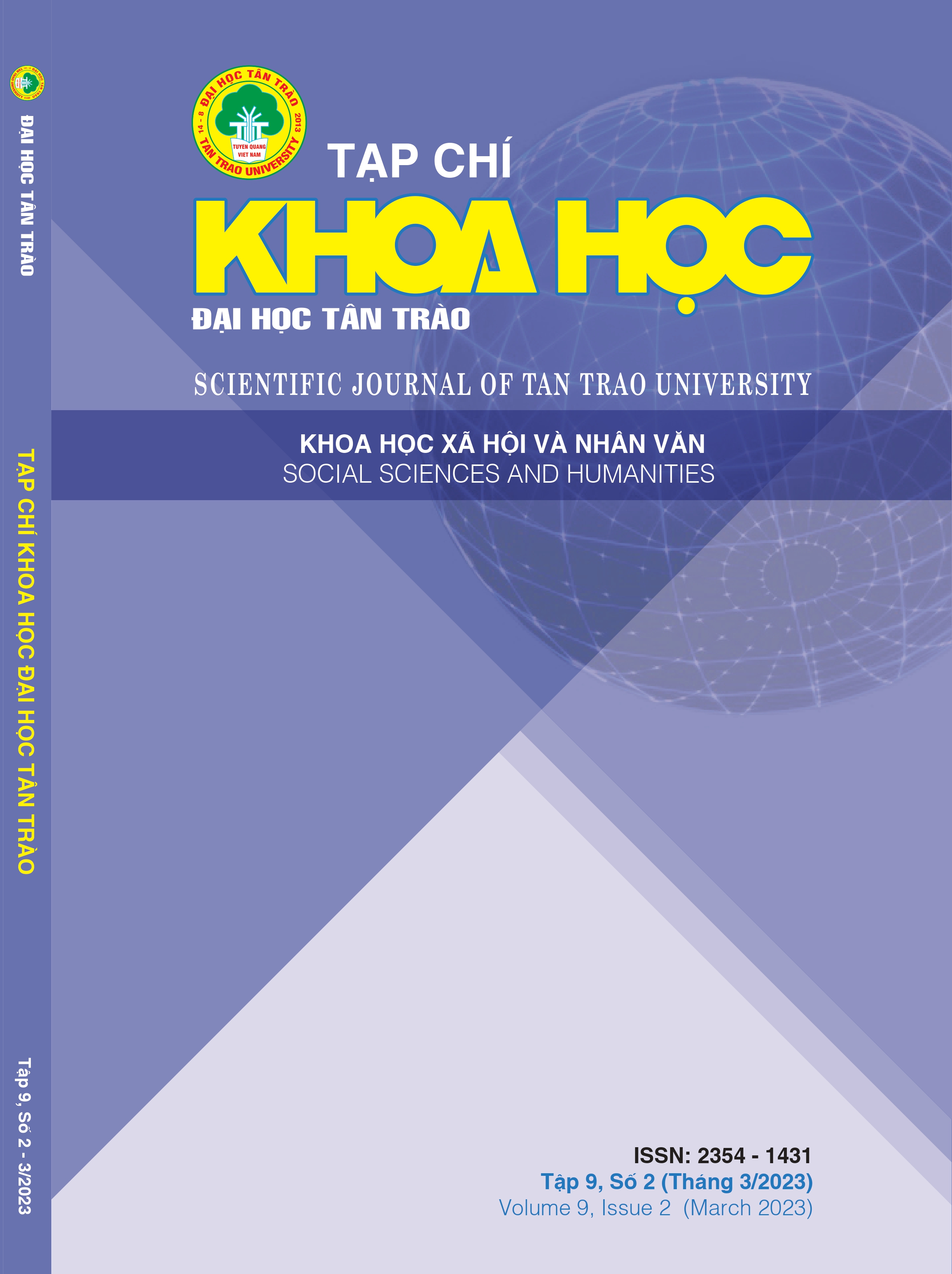CHAU VI LONG (CHIEM HOA DISTRICT, TUYEN QUANG PROVINCE) UNDER LY DYNASTY (XI- XII CENTURY)
DOI:
https://doi.org/10.51453/2354-1431/2023/923Keywords:
Chau, Ly Dysnasty, Ki mi, Bien vienAbstract
Tuyen Quang is a northern mountainous province This is also a living place of many ethnic groups. Tuyen Quang has an important strategic position in terms of economy, politics, national defense and security. Tuyen Quang is the land which enriches in culture and history. In the 11th - 12th centuries, Ly Dynasty named this land Chau Vi Long.
Chau Vi Long is an area whose center is the land of Chiem Hoa, Tuyen Quang today. The land is wide with small population having both rugged mountains and strategic position in terms of national defense and security. People of all ethnic groups here have a tradition of solidarity, patriotism, compassion, courage in the struggle against foreign invaders. They always work hard, in addition, have creativity in labor and unique cultural and spiritual life. In order to prove this statement, in Tac village, Yen Nguyen commune, Chiem Hoa district, Tuyen Quang province now, there is still an ancient stele Bao Ninh Sung Phuc and many archaeological vestiges dating back to Ly Dynasty (1009 – 1225) which demonstrates the heroic history period of this land.
Downloads
References
[1] Dung,H.T.T., Tu, T.M., (2020), Ha Di Khanh's role in national history in XI-XII centuries. Scientific Journal of Tan Trao University, March 2020, Page 124-138.
[2] Dai Nam Nhat Thong Chi (volume 4, 2006), Thuan Hoa Publishing House, Hue.
[3] Executive Committee of Chiem Hoa District Party Committee (2020), History of the Party Committee of Chiem Hoa District, Political Publishing House, Hanoi.
[4] Executive Committee of Tuyen Quang Provincial Party Committee (2020), History of the Party Committee of Tuyen Quang Province, National Political Publishing House, Hanoi.
[5] Huyen,P.T.T. (2022), Value of Bao Ninh Sung Phuc at Bao Ninh Sung Phuc pagoda in Chiem Hoa District, Tuyen Quang Province, Scientific Journal of Tan Trao University, March 2022, Page 124-138.
[6] Liem N.S. (1981), Complete Annals of Đại Việt (volumn1), Social Sciences Publishing House, Hanoi.
[7] National History of Nguyen Dynasty (2008) Kham Viet Su Thong Cuong Muc (volume 1), Education Publishing House, Hanoi
[8] National History of Nguyen Dynasty (1998) Kham Viet Su Thong Cuong Muc (volume 2), Education Publishing House, Hanoi
[9] Uyen. D.T. (1995), Understanding the government of our country in the feudal period, Historical Research magazine (No. 6), page 20-25.
[10] Uyen, D.T. (2007), Ethnic policy of Vietnamese feudal dynasties, Education Publishing House, Hanoi.
[11] Vuong, T.Q. (2005), Brief History of Viet Nam, Thuan Hoa Publishing House, Hue.
Downloads
Published
How to Cite
Issue
Section
License

This work is licensed under a Creative Commons Attribution-ShareAlike 4.0 International License.
All articles published in SJTTU are licensed under a Creative Commons Attribution-ShareAlike 4.0 International (CC BY-SA) license. This means anyone is free to copy, transform, or redistribute articles for any lawful purpose in any medium, provided they give appropriate attribution to the original author(s) and SJTTU, link to the license, indicate if changes were made, and redistribute any derivative work under the same license.
Copyright on articles is retained by the respective author(s), without restrictions. A non-exclusive license is granted to SJTTU to publish the article and identify itself as its original publisher, along with the commercial right to include the article in a hardcopy issue for sale to libraries and individuals.
Although the conditions of the CC BY-SA license don't apply to authors (as the copyright holder of your article, you have no restrictions on your rights), by submitting to SJTTU, authors recognize the rights of readers, and must grant any third party the right to use their article to the extent provided by the license.


